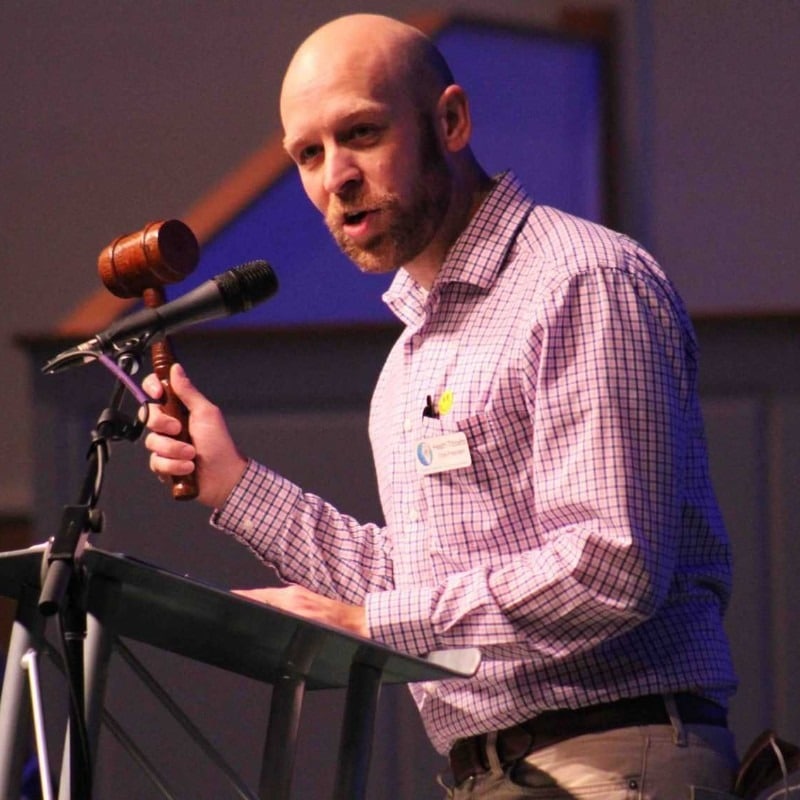People hate meetings. A recent workplace study by Fischtank PR found 90% of Americans consider meetings a waste of time and productivity. And Forbes reported 58% of workers would rather go to the doctor than another work meeting.
Church meetings are no better. They’re often overscheduled, poorly run, and struggle for quorum and impact. If we know our meetings are broken, it’s time to fix them. It’s time to stop meeting and start collaborating.
My disdain for meetings nearly robbed me of a great privilege in serving as an officer to IBSA.
The committee meetings I had previously attended felt like a waste of time and energy, but I began to think, “What if I could help change it?” This thinking has permeated my planning for meetings both at the state level and within my local church.
My “aha” moment
Oddly enough, Covid and frugality were the partners that led me to fully solidify this approach to meetings. In the early rise of the Zoom meeting, we used the free version of Zoom which allowed for a 40-minute meeting, ten of which were wasted by someone who couldn’t turn on their microphone.
We were forced to maximize our time, which brought greater value to the members of the team involved. Our meetings didn’t become rushed, but we became better prepared before they even started.
Moving from meetings to collaborations can work for churches. I’ve watched it happen. Let’s walk through the basic steps to make the move, then I’ll share a couple of specific examples of how this has worked.
1. Set an expectation of attendance.
Even for regularly scheduled meetings, we send out reminders asking people to respond with their commitment to attend. Someone may say they have an unavoidable commitment, so we offer the opportunity to contribute via email or a brief phone call. This demonstrates they are not simply a cog in the machine, but a voice in the room. For those who simply don’t show up, we reach out and let them know they were missed. If this happens multiple times, we gently offer them an exit ramp.
2. Have a written agenda.
Meetings without agendas are meetings without a point. A written agenda should be created by the chair and provided to every member along with the upcoming meeting reminder.
We’ve all experienced a meeting where someone begins to derail the conversations with loosely related concerns. A written agenda provides the opportunity to refocus by simply stating, “I appreciate your concern and passion for this topic. For the sake of time we’re going to return to our agenda, but we could address this in our next meeting.”
Not only does the agenda maximize your time, but it facilitates moving from meetings to collaborations.
3. Ask for solutions
Perhaps the worst question anyone can ask in a meeting is “What does everybody think?” The best ideas usually don’t happen on the fly, but after a time of consideration.
Providing an agenda ahead of time allows members to consider the potential questions and to think through solutions. Meetings then become collaborations as we ask, “What ideas did you come up with? Which of the proposed options do you prefer and why?” This allows participants to feel like they’re more than just listening to the leader talk. They’re part of a team that’s worth their time.
Putting it into practice
Like most churches, ours was single-staff when I arrived, but there was a leadership team. Most churches have some kind of team made up of the major ministry leaders. Our team was even bigger than that, including several who led logistical teams. We were having monthly meetings that would have had too many voices, that is if everyone had ever shown up. Most saw it as a meeting that accomplished little.
First, we began by addressing the attendance issue by removing people. Many were doing great in their individual role, but had no interest in the larger meeting. We identified people who were unnecessary for that team, expressed the value of their main role, and gave them an exit from the larger meeting. Nearly all of them accepted the exit. A couple recommitted to attending and we happily allowed them to continue.
We also moved from monthly to quarterly meetings and committed that meetings were limited to one hour. Previously they ran as long as two hours. Those changes increased attendance without limiting the impact of the leadership team.
Second, we improved the agenda. Previously the meetings discussed the church calendar unnecessarily and made plans to coordinate events. The issue was that no one ever knew what potential areas of coordination were needed prior to the meeting. Now we provide an email reminder of the meeting two weeks prior with an upcoming agenda.
Third, we built collaboration. The questions that needed answers were clear before everyone arrived. Sometimes we provide a few options that have been identified and ask people to choose one they think is best. People can still create other options, but it’s rare and we don’t waste precious time chasing down every suggestion.
Our meetings can change. Whether small committee meetings or business meetings, these steps can help move from meetings to collaborations. A greater sense of ownership will lead to better results and implementation of the ideas those collaborations produce.

By Heath Tibbitts
